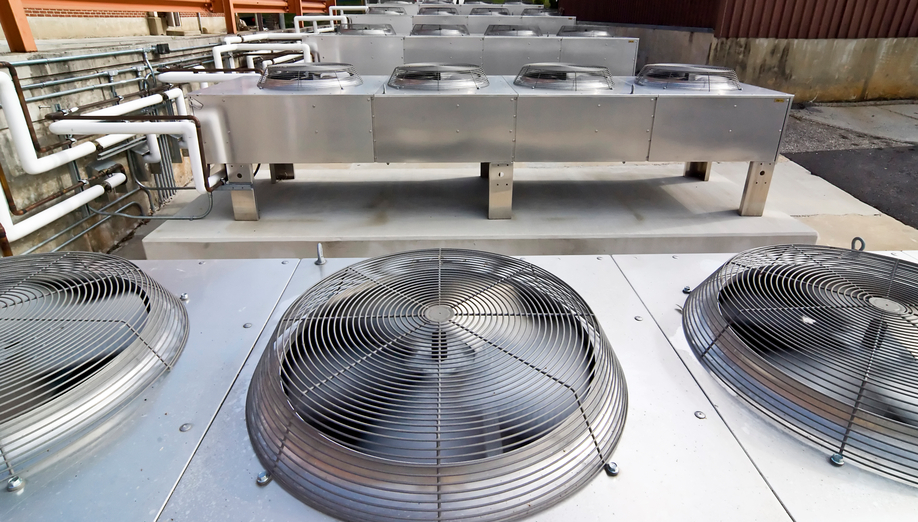Newfoundland and Labrador HVAC & Ethics/Regulatory 30 PDH Discount Package 1
Courses in this Package
Introduction to Refrigeration Systems (M08-008)
Air Conditioning Psychrometrics (M05-005)
Cooling Load Calculations and Principles (M06-004)
Air-Source Heat Pump Sizing and Selection (M05-029)
Cooling Tower Key Components and How to Improve Water Efficiency (M01-018)
Heat Recovery Ventilators (M02-049)
General Principles of Engineering Ethics and Statutes for Newfoundland and Labrador Professional Engineers (NL3-001)

This online engineering course provides necessary information to understand the principles and theory of refrigeration, the components of mechanical refrigeration systems, and the types of refrigerants and associated equipment. This course also discusses the methods used for installing, maintaining, and repairing refrigeration equipment, including domestic refrigerators and freezers.
Refrigeration is the process of removing heat from an area or a substance. It is usually done by an artificial means of lowering the temperature, such as by the use of ice or mechanical refrigeration, which is a mechanical system or apparatus, designed and constructed to transfer heat from one substance to another.
This 8 PDH online course is intended for HVACR, mechanical and industrial engineers, manufacturers, maintenance staff, and others seeking a basic understanding of refrigeration systems.
This P.Eng. continuing education course is intended to provide you with the following specific knowledge and skills:
- Understanding the physics behind heat and refrigeration
- Learning about the refrigeration cycle and its different mechanical components
- Familiarizing with the different types of refrigerants
- Understanding the safety precautions associated with refrigerants
- Familiarizing with the different types of refrigerant equipment
- Understanding the installation procedures for refrigerant equipment
- Learning about the maintenance, service, and repair procedures associated with refrigerant equipment
Upon successful completion of the quiz, print your Certificate of Completion instantly. (Note: if you are paying by check or money order, you will be able to print it after we receive your payment.) For your convenience, we will also email it to you. Please note that you can log in to your account at any time to access and print your Certificate of Completion.

This online engineering PDH course provides an overview of psychrometrics and suggests how a better understanding of psychrometrics will improve air conditioning design and selection of equipment.
Psychrometry is the study of moist air. It is significant in terms of thermal comfort and is a major consideration in design of air conditioning systems. Air conditioning engineers use the psychrometric chart to predict changes in the environment when the amount of heat and/or water in the air changes. A psychrometric chart provides a convenient way to look at the air conditioning processes and it will answer why heated air can hold more moisture, and conversely, how allowing moist air to cool will result in condensation.
This 5 PDH online course is applicable to students, mechanical and HVAC engineers, process engineers, architects, building designers, contractors, energy auditors, facility managers who are interested in gaining a better understanding of psychrometrics.
This P.Eng. continuing education course is intended to provide you with the following specific knowledge and skills:
- Understand the basic terminology and definitions related to air properties
- Read psychrometric chart
- Describe relationship of 7 air properties: DBT, WBT, RH, dew point, absolute humidity, enthalpy and specific volume
- Apply the psychrometric charts on air-conditioning applications
- Understand how the various properties of air are measured
- Understand various psychrometric processes: sensible heating and cooling, cooling and dehumidification, evaporative cooling, heating and humidification and air mixing
- Understand the air conditioning processes for 4 extreme climatic conditions viz. Miami, Phoenix, Minneapolis and Seattle
- Understand the difference between sensible heat and latent heat
- Understand the terms sensible heat factor, room sensible heat factor and grand sensible heat factor
- Understand how to calculate the required volume air flow rate
- Understand how to compute the cooling coil capacity with example
- Understand standard equations used in air conditioning
In this professional engineering CEU course, you need to review the course document titled, "Air Conditioning Psychometrics".
Upon successful completion of the quiz, print your Certificate of Completion instantly. (Note: if you are paying by check or money order, you will be able to print it after we receive your payment.) For your convenience, we will also email it to you. Please note that you can log in to your account at any time to access and print your Certificate of Completion.

This online engineering PDH course provides a procedure for preparing a manual calculation for cooling load using CLTD/CLF method suggested by ASHRAE and includes two detailed examples. For more advanced methods such as TFM, the reader should refer to ASHRAE and other handbooks.
Heating and cooling load calculations are carried out to estimate the required capacity of heating and cooling systems, which can maintain the required conditions in the conditioned space. To estimate the required cooling or heating capacities, one has to have information regarding the design indoor and outdoor conditions, specifications of the building, specifications of the conditioned space, and any special requirements of the particular application.
Generally, heating and cooling load calculations involve a systematic and stepwise procedure, which account for all the building energy flows. In practice, a variety of methods ranging from simple rules-of-thumb to complex transfer function methods are used to arrive at the building loads.
This 6 PDH online course is applicable to mechanical engineers, design and construction personnel, technical staff and facility personnel who are interested in gaining a better understanding in cooling load calculations and principles.
This P.Eng. continuing education course is intended to provide you with the following specific knowledge and skills:
- Understand the basic terminology and definitions related to air conditioning load calculations
- Explain the differences between heating and cooling load design considerations
- Explain the difference between 1) space heat gain v/s cooling load 2) space cooling v/s cooling load and 3) external loads v/s internal loads
- Differentiate between sensible and latent loads
- List commonly used methods for estimating cooling loads
- Estimate the internal and external cooling loads using CLTD/CLF method from building specifications, design indoor and outdoor conditions, occupancy etc.
- Describe various equations and the information sources to determine conductive load through opaque building elements.
- Describe various equations and information sources to determine the solar transmission load through glazing.
- Describe various equations and information sources to determine the internal load due to people, lights and power appliances.
- Determine the supply air flow rate
- Learn by examples the detailed methodology to cooling load calculations
- Learn the functional parameters of software programs such as TRACE 700 and CHVAC
In this professional engineering CEU course, you need to review the course document titled "Cooling Load Calculations and Principles".
Upon successful completion of the quiz, print your Certificate of Completion instantly. (Note: if you are paying by check or money order, you will be able to print it after we receive your payment.) For your convenience, we will also email it to you. Please note that you can log in to your account at any time to access and print your Certificate of Completion.

This online engineering PDH course provides an overview of the Air-Source Heat Pump (ASHP) sizing and selection process. It provides guidance on the process of sizing air source heat pumps according to the design heating or cooling load and intended use (“Sizing”), as well as identifying the appropriate system according to the installation and application (“Selection”).
The focus of this course is on air source heat pumps for space heating and/or cooling applications. It covers several applications of ASHPs, including new home (or major new addition) installations, full heating system replacement where existing HVAC equipment is removed, as well as add-on ASHP applications to displace heating energy or provide supplemental heating where existing heating equipment remains functional.
This 5 PDH online course is intended for mechanical engineers, systems designers, and other technical professionals to assist them in selecting and sizing air source heat pumps in both new and existing residential applications.
This PE continuing education course is intended to provide you with the following specific knowledge and skills:
- Familiarizing with the most common terminology used in the industry
- Learning about the different applications and technologies of ASHPs
- Learning how to determine the design heating and cooling load estimates
- Understanding the sizing approach and capacity requirements of ASHPs
- Gaining an overview of the ASHP control strategies and backup heating requirements
Upon successful completion of the quiz, print your Certificate of Completion instantly. (Note: if you are paying by check or money order, you will be able to print it after we receive your payment.) For your convenience, we will also email it to you. Please note that you can log in to your account at any time to access and print your Certificate of Completion.

This online engineering PDH course provides a basic understanding of cooling towers, describes their key components and provides recommendations on how to improve the water efficiency.
Cooling towers are an integral component of many refrigeration systems, providing comfort or process cooling across a broad range of applications. They are the point in the system where heat is dissipated to the atmosphere through the evaporative process, and are common in industries such as oil refining, chemical processing, power plants, steel mills, and many different manufacturing processes where process cooling is required.
This 1 PDH online course is intended for mechanical and environmental engineers as well as others interested in learning more about cooling towers and how to improve their water efficiency.
This P.Eng. continuing education course is intended to provide you with the following specific knowledge and skills:
- Understanding the basic cooling tower terms
- Learning the different types of cooling towers
- Learning the system calculations
- Understanding the factors that limit cycles of concentration
- Knowing the system concerns
- Familiarizing with the treatment options
Upon successful completion of the quiz, print your Certificate of Completion instantly. (Note: if you are paying by check or money order, you will be able to print it after we receive your payment.) For your convenience, we will also email it to you. Please note that you can log in to your account at any time to access and print your Certificate of Completion.

This online engineering PDH course discusses the need for mechanical ventilation in homes as well as explains the components of an HRV system, how to operate and maintain the system, and how to solve operating problems.
The importance of ventilation in today's more energy-efficient homes is universally recognized. Introduced as a requirement for airtight homes, continuous ventilation systems are now common in new housing and major home renovations. Because of the energy savings generated, the system of choice is often a heat recovery ventilator (HRV) or energy recovery ventilator (ERV).
This 2 PDH online course is applicable to architects, engineers, designers, contractors, homeowners, and manufacturers interested in gaining a better understanding in residential heat ventilators.
This P.Eng. continuing education course is intended to provide you with the following specific knowledge and skills:
-
Understanding the need for mechanical ventilation in houses
-
Understanding the HRV system
-
Learning how to operate the HRV
-
Familiarizing with the HRV routine maintenance procedures
-
Familiarizing with the HRV troubleshooting guide
In this professional engineering CEU course, you need to review "Heat Recovery Ventilators" publication of the Natural Resources provided by Canada's Office of Energy Efficiency.
Upon successful completion of the quiz, print your Certificate of Completion instantly. (Note: if you are paying by check or money order, you will be able to print it after we receive your payment.) For your convenience, we will also email it to you. Please note that you can log in to your account at any time to access and print your Certificate of Completion.

This online engineering PDH ethics course presents the principles of engineering ethics and statutes for Newfoundland and Labrador Professional Engineers.
Engineering ethics is (1) the study of moral issues and decisions confronting individuals and organizations involved in engineering and (2) the study of related questions about moral conduct, character, ideals and relationships of peoples and organizations involved in technological development (Martin and Schinzinger, Ethics in Engineering).
This course will address the principles of engineering ethics that every engineer is expected to live by when practicing their profession. This course also provides an overview of PEGNL’s general statutes and regulatory laws. It will also present unique ethical studies randomly selected to demonstrate ethical challenges for professional engineers and alternatives to address these challenges.
This 3 PDH online course is applicable to Professional Engineers licensed in Newfoundland and Labrador and who are required to demonstrate continuing professional competency in ethical practice and regulatory learning as a condition of their license renewal.
This online course is intended to provide you with the following specific knowledge and skills:
- Understanding the definition of engineering ethics
- Learning about the important principles of the Engineer’s Professional Responsibility
- Gaining a general overview on PEGNL’s procedure of filing an allegation, its resolution by Registrar and its referral to Complaints Authorization Committee (CAC)
- Familiarizing with PEGNL’s general statutes and regulatory laws
- Understanding professional ethical practices through presenting realistic case studies
Upon successful completion of the quiz, print your Certificate of Completion instantly. (Note: if you are paying by check or money order, you will be able to print it after we receive your payment.) For your convenience, we will also email it to you. Please note that you can log in to your account at any time to access and print your Certificate of Completion.